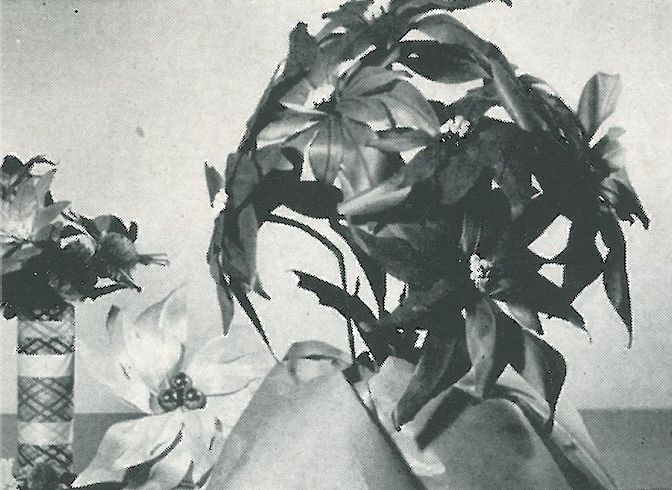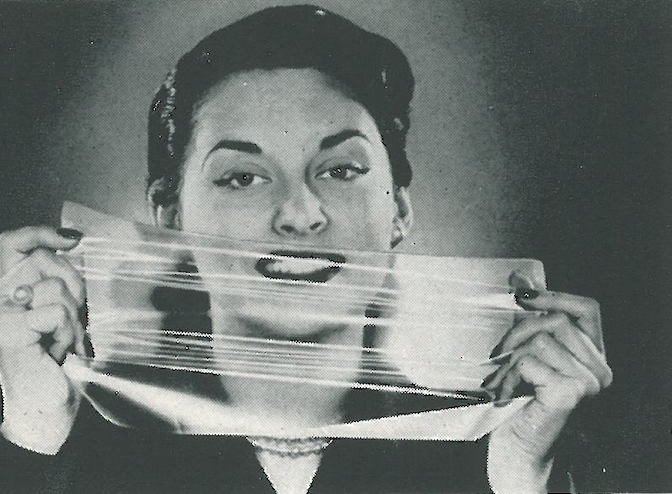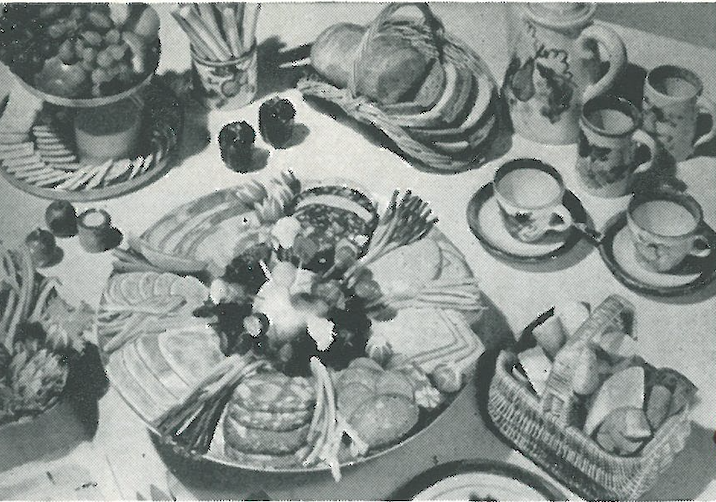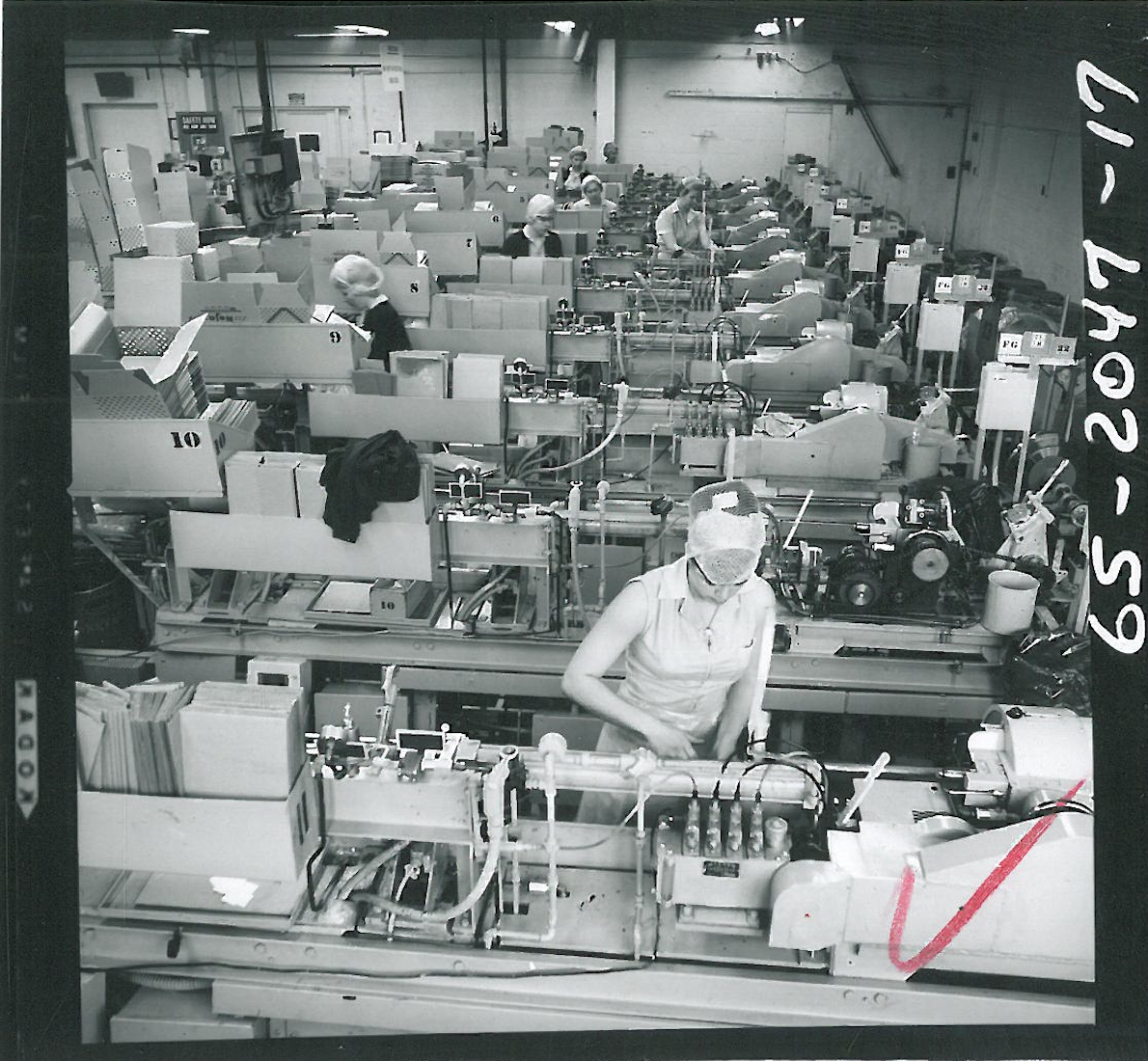Union Carbide: When Lindsay Had a Vision
3 min read…
It’s safe to say – and I think felt throughout the community from residents and tourists alike – that Lindsay seems to have lost its way without any apparent long-term vision for housing and economic growth. Marred by a devastating economic shift that shipped industry and job overseas and an increase in bureaucratic responsibilities, Council could look to the past successes to inform the plans of where they could go in the future. Mayor Charles Lamb spoke loud and often with passion on building more public and social housing in Lindsay; he was successful. We had Dan McQuarrie, the Industrial Commissioner, who had vision to shape Lindsay into an economic driver; he was successful. In fact, without the organizing and advocacy from McQuarrie and Mayor Lamb, one of Lindsay’s largest employers would never have located here: Union Carbide. If Council were to reflect on history to emulate success today, let’s take a brief peak at Union Carbide’s beginnings here in town.
Making Lindsay an Economic Driver
McQuarrie knew that Lindsay needed more growth through industry and Charles Lamb knew that if we had more industry and people, we would need more housing. Both men would work together to make sure this happened and after months of negotiations and talks, a Canadian subsidiary, Visking Limited, was created and operations were to be located in Lindsay. Rather than rely on foreign markets, the Canadian meat packing industry could be served in Canada with a Canadian-made product. With a workforce of around 200 by the time it officially opened in 1950, cellulose tubing for meat packing was to be their principal product produced.
Breaking Ground at Vikings Ltd. October 23, 1948. From left to right: unknown, Mayor Charles Lamb, R. McDowall, Hon. Leslie Frost, T. G. Remer, W. R. Salter, B. H. Schenk. (2020.126.4.1.2).
Breaking Ground
Breaking ground in December of 1948, the Visking Limited plant started to take shape. Putting together the work of architect A. G. Facey by general contractors A. W. Robertson Ltd. and consulting engineer Edgar Cross, the plant’s exterior took almost a year to fully construct. Those hired in 1949 – affectionately known as the 49ers – worked in the staff house and trained at “Club Valdora” during this time. We will take a look at one of those 49ers in a moment.
Below are some photographs showing the progression of constructing the exterior in the winter of 1948 and summer of 1949.

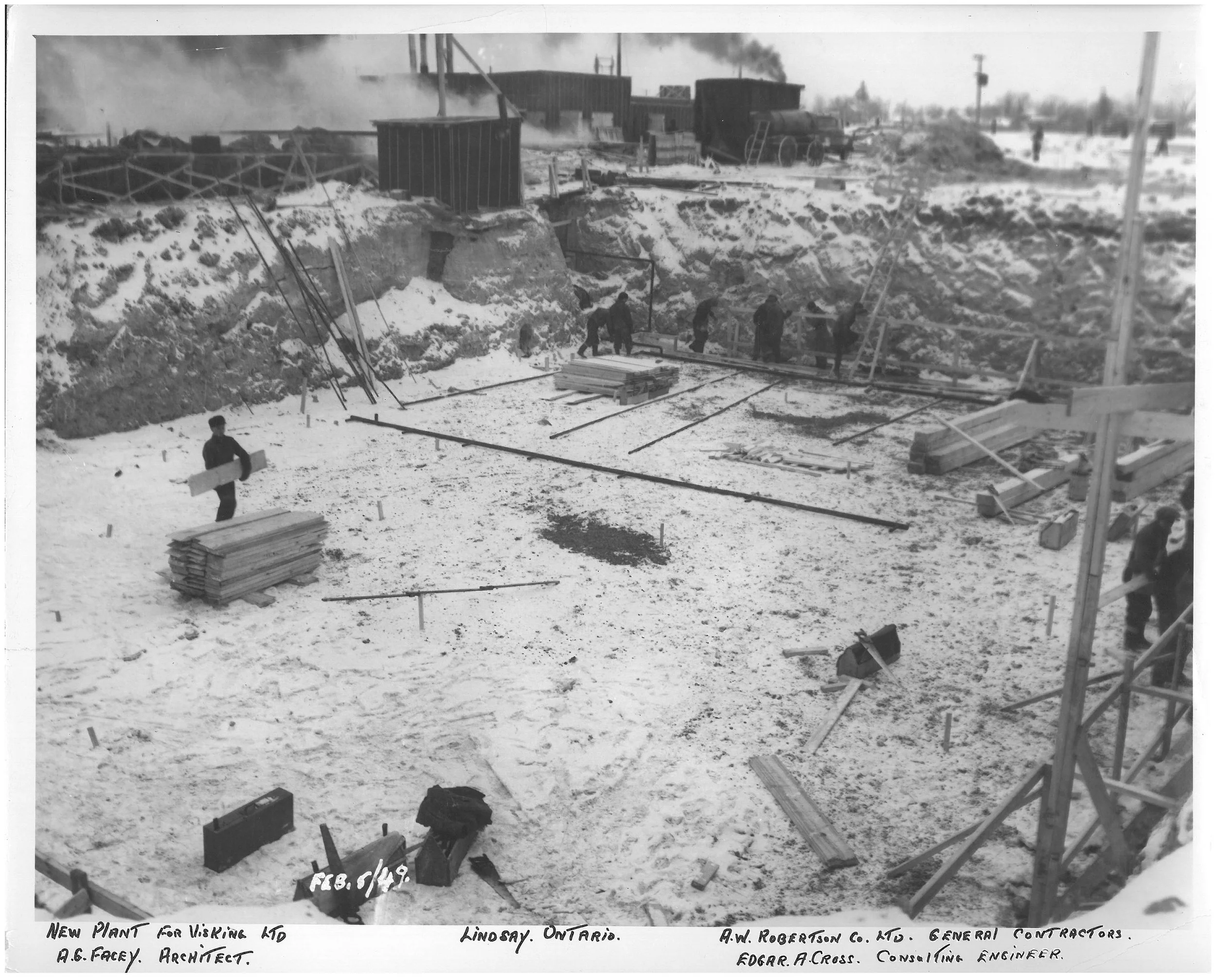
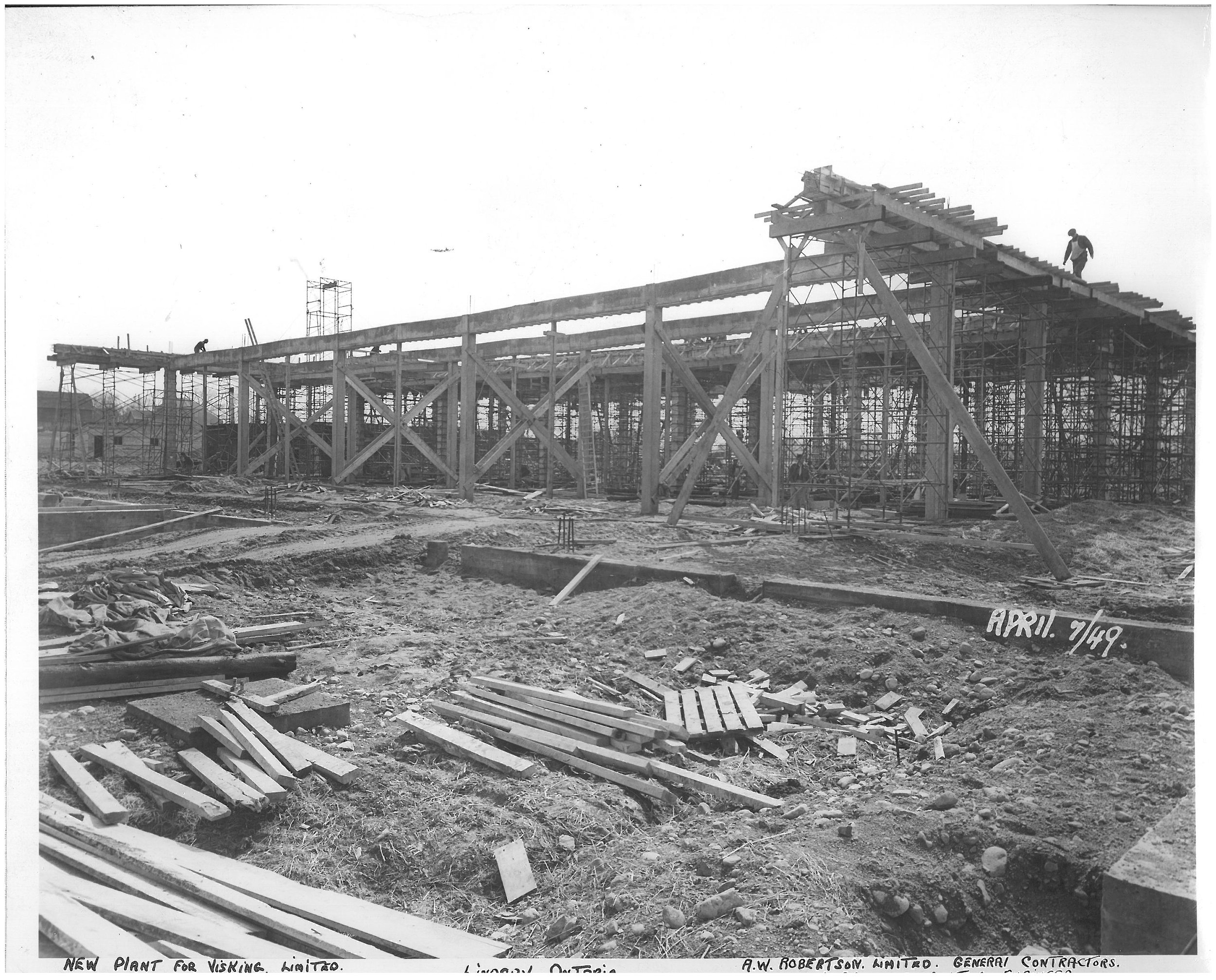
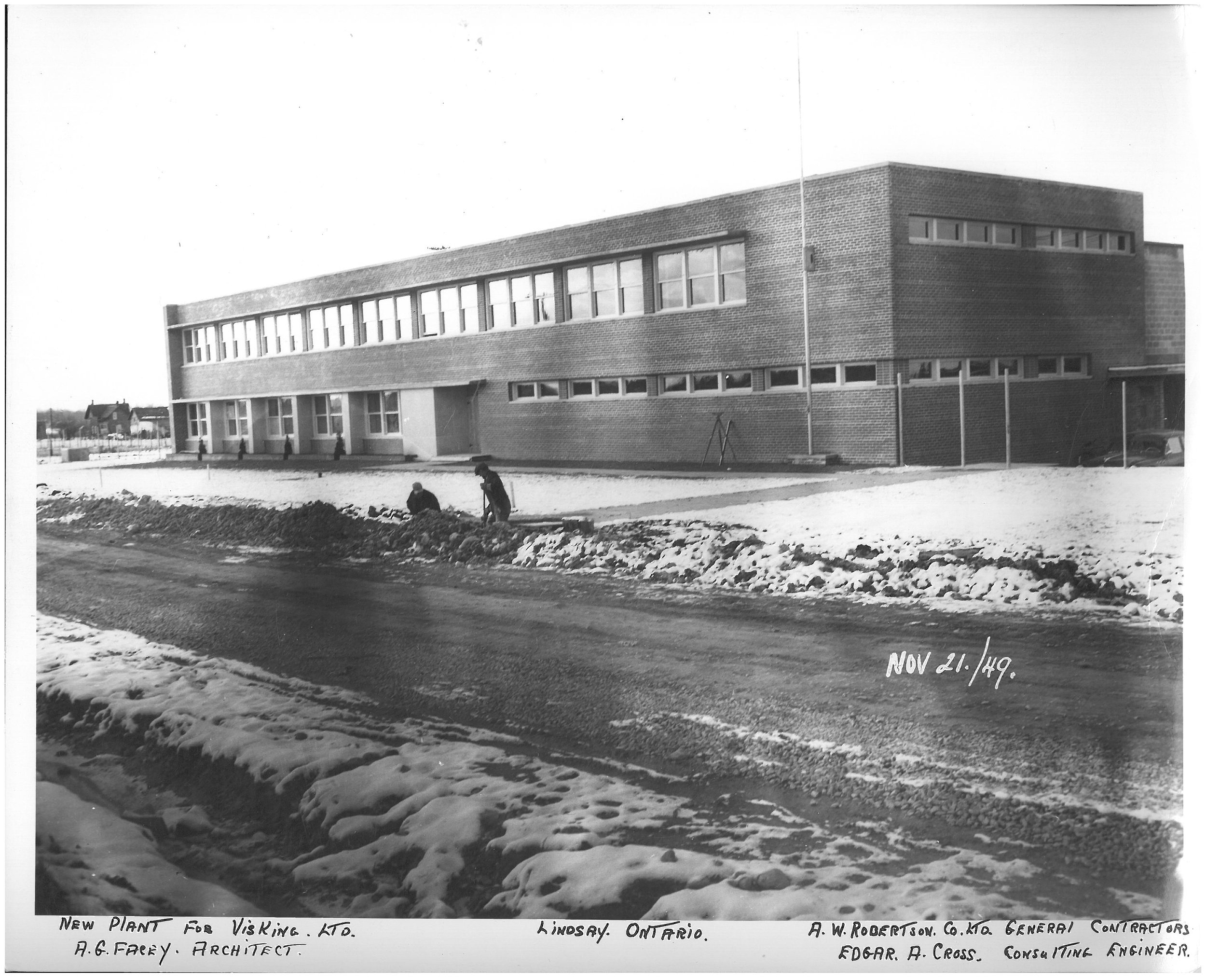
The “Staff House” or “The Ole Home”
Visking Ltd. Staff House South Side. May 1950. (2022.126.5.1.89).
Staff House. 1950.(2020.126.5.1.88).
I won’t belabour the point that was the “Staff House,” but it was the original milestone of establishing Visking Ltd. Originally part of the George Murphy farm, the house, barn, and milk house were all sold to Visking in 1948. The barn was dismantled and rebuilt on a property in Dunsford. The first Staff housekeeper, whose quarters were in the north end of the building, was Mrs. Gray. The rest of the house was converted to office space for General Manager B. H. Schenk and the Ordering Dept., the dining room was used as offices for the Purchasing Agent and Works Engineer, and then the living room was divided between Accounting and the switchboards. This arrangement of offices was in use during construction before opening in May 1950 and new offices constructed.
Remember! Always Look for the Visking Logo!
Though the principal product was the cellulose casing that made the appearance of meat products more appetizing, employees also produced “Visqueen,” a polyethylene film; “Viskon,” a non-woven cloth which washed and draped like regular cloth; and also made “Visten,” a plastic tubing.
A Look Inside the Plant Through Photos
I have selected a few photographs of inside the plant that I think gives a sense of the operation. We are indebted to whomever snapped these photographs who went the extra mile to label each photograph after development.
Shirring Department. 1965. Leona Reid (at back) and Jeanette Smith packing casings using rods. (2020.126.5.1.2).
Shredding Room, C.E.D. (1965). Bernie Wooldridge receiving shredded cotton from machine. (2020.126.5.1.1).
Barette Room. 1965. Bernie Wooldridge working at machine. (2020.126.5.1.9).
Frank McCall rolling the Visking casing. (1965). (2020.126.5.1.6)
Employee Profile: Grace Endicott
Visking 49ers. [before 1960]. Starting left to right; Back: Ed Littleton, Gord Boyd, Lou McLeish, Len Cannons, Tom Curtin. Middle: Jack Beal, Grace Endicott, Marg Ford, Larry Hanson, Bernard Schenk, Ann Armstrong, Nettie Smith, Bernie Bisette. Front: Andy Cameron, Jack Duffy, Gerry Reid, Noble Eberts. (2020.126.5.3.6).
I did say earlier that I would do an employee profile of one of the 49ers. I have decided on Grace Endicott to give a brief overview of her work. Grace started working at Visking on May 17, 1949 which was the day that “Operation Shirring Machine” started at Club Valdora. She would apprentice on these machines and after successfully completing the apprenticeship, she worked on the water tester, humidifier, and packing. Upon her third anniversary at Visking, Grace would receive a promotion to Group Leader of the Shirring Area.
Shirring Area Employees. 1952. Left to right; Back: Doreen Butts, Anne Unger, Lila Maughan, Shirley Coppins. Third Row: Leona Kerr, Jean Hennesey, Daisy Quibell, Dorothy Moynes, Eva Hart, Ruth O’Neill. Second Row: Francis Cannons, Bernice Hannock, Phyllis Crowe. Front: Winnie Eade, Jean Grant. (2020.126.5.2.39)
Grace described herself as a strict Lindsayite, having been born in the town and completed her education here and worked for Zeller’s. Marrying Clark Endicott, who was employed at Lindsay Coal Company, they had two children, Margaret and Donald. While not at work, she took pride in meticulously upkeeping and expanding her garden at home and had interest and a passion for knitting. No doubt, she was of extreme value to the company as one of the “originals.”
What Does All This Mean?
The reason why I decided to write a post on Visking/Union Carbide in its infancy was twofold. The first being of course to share some of the photographs and information of this collection, but the second was to show what can be accomplished in our small community. We can have civil servants, elected officials, and residents work together with a shared vision of what our community could look like. There are possibilities to bring employers to Kawartha Lakes. There are possibilities of building attainable mixed-use housing not based on sprawl. We can have renewed growth of main streets that promotes health and safety while out and about. We used to have leaders that did this. Our new 2022-2026 Council has an opportunity here to be bold, passionate and effective leaders, much like Charles Lamb and Dan McQuarrie. *Spoiler for future post: Visking employees were one of the first to build co-op housing in Ontario.
One of the best parts about my job is to compare the past to the present. Sometimes records and collections can be as simple as photographs and records that document a business’ activities. But from those photographs we can create narratives that fit today’s living or even just allows all of us to reflect and think what we can still have.
Union Carbide. 1964. Aerial photograph of the entire plant. (2020.126.5.3.4).
Written by Zac Miller, Archivist





